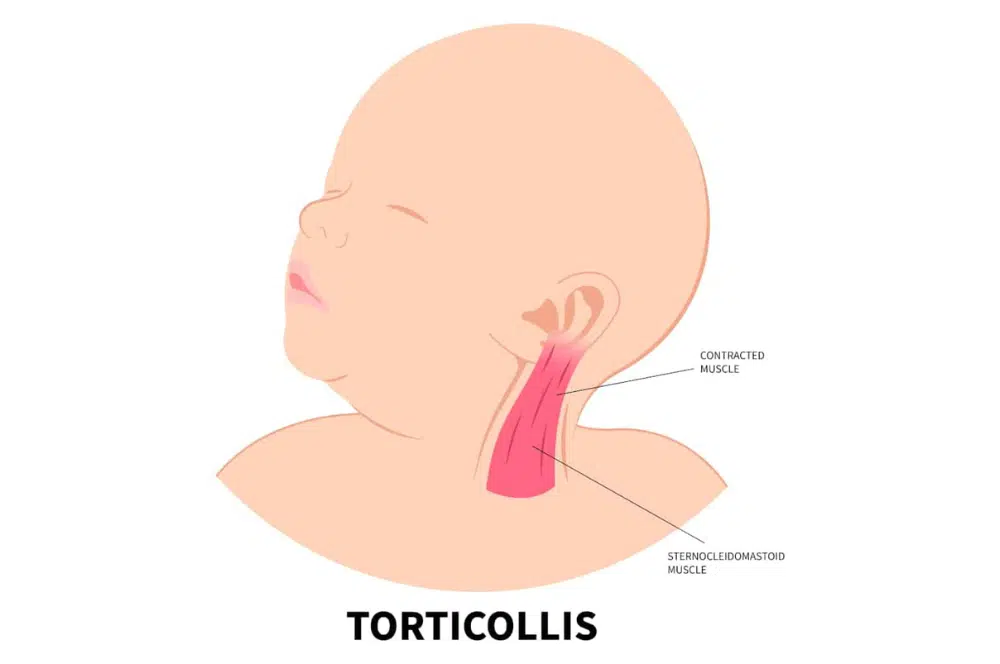By Francesca Resurreccion PT, DPT
What is Torticollis?
Torticollis is a condition in which an infant’s head is tilted to one side while the chin is turned toward the opposite shoulder. Oftentimes, the main culprit for Torticollis is the sternocleidomastoid muscle (SCM)—this muscle’s function is to bring your ear towards your shoulder to the same side and rotate your head to the opposite side. For example, if your child has right Torticollis then we will see a right head tilt and rotation towards the left side. This head position leads to tightness on one side of the neck and can even lead to tightness on their trunk. Torticollis can develop over the first few months of life due to positional preferences.
How to Identify Torticollis:
Parents may notice that their baby’s head consistently tilts in one direction, has a favorite side to turn their head to, or they have difficulty turning their head equally to both sides. I recommend looking back at photos to check if your baby prefers to look to one side or periodically check throughout the week to see if there’s a preference. Other signs include flattened areas on the baby’s head from resting in the same position.
3 Ways to Help Prevent Torticollis in Infants:
- Encourage tummy time and side-lying play: Tummy time and side-lying play helps to strengthen the baby’s neck, shoulders, and back muscles, encouraging balanced development. This also reduces the pressure on the back of the head, lowering the risk of flat spots. Parents can roll a towel and place it under their baby’s back, forming a little wedge, to support them in side-lying. For babies with reflux, they may have an easier time doing tummy time on an incline—like on their parents’ chest. A modified version of side-lying for babies with reflux is to simply carry them in side-lying like in the photo below.
- Look out for side preferences: if you notice your baby enjoys looking to one side over the other, you can use a visually stimulating toy (my favorite toy) to assist them in turning their head to the opposite side. Parents can place high contrast flashcards or mobiles that attach to the side of the crib (option 1, option 2) to encourage your baby to look to their non-preferred side.
- Vary positions when feeding, during bath time, and during diaper changes: When breastfeeding or bottle-feeding, alternate sides regularly to encourage equal use of the neck muscles. During bath time, point the head of the baby bathtub towards the faucet one day then switch sides so the head of the bathtub faces the opposite direction during the next bath time. When changing your baby’s diaper, you can position yourself on your baby’s non-preferred side to encourage them to look the opposite direction.
With early identification and intervention, most cases of Torticollis in infants can be managed effectively. If you have concerns, reach out to your pediatrician to discuss whether a PT eval is warranted. Here at Uplift, we offer 2 Tummy Time classes a month for babies 3-months to 12-months-old. These classes are led by our physical therapist who can help assist with early detection for Torticollis and provide activities to help achieve motor milestones. Please call ahead to RSVP for our Tummy Time classes, space is limited.
The Academy of Pediatric Physical Therapy has amazing resources for parents for more information about Torticollis.





